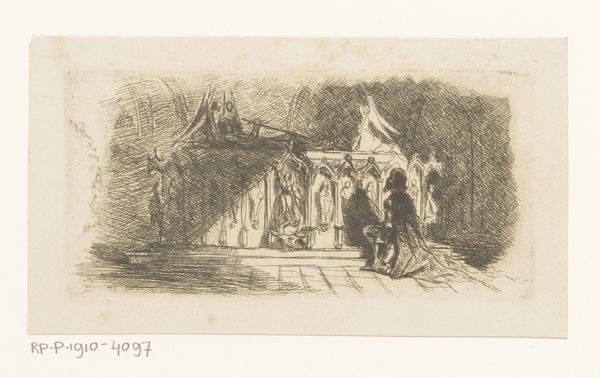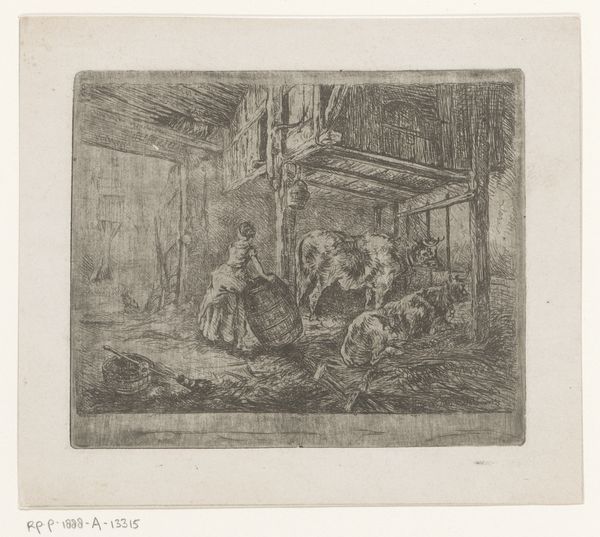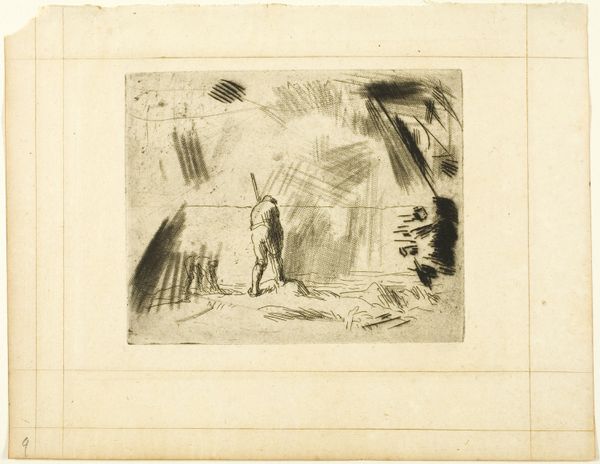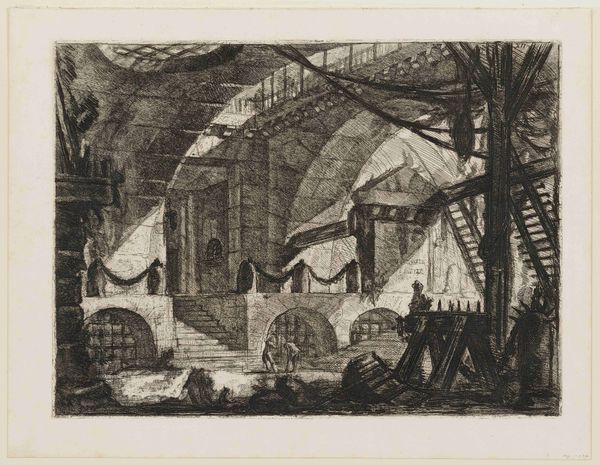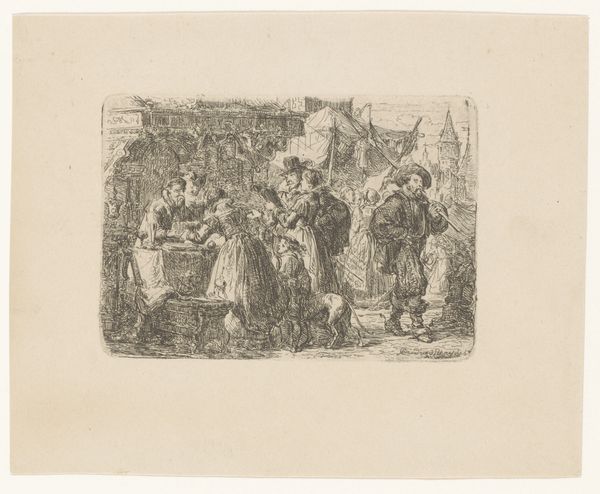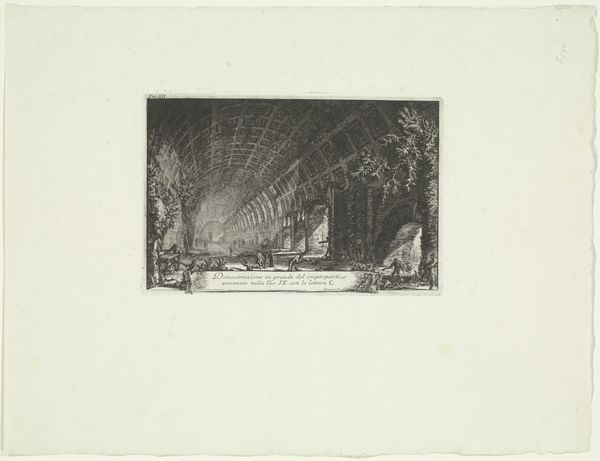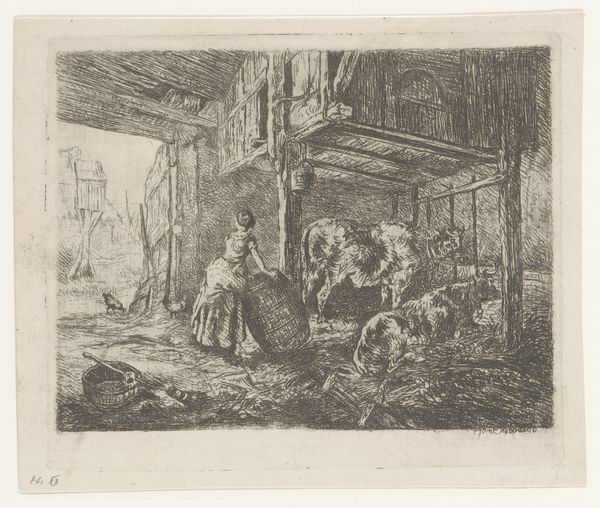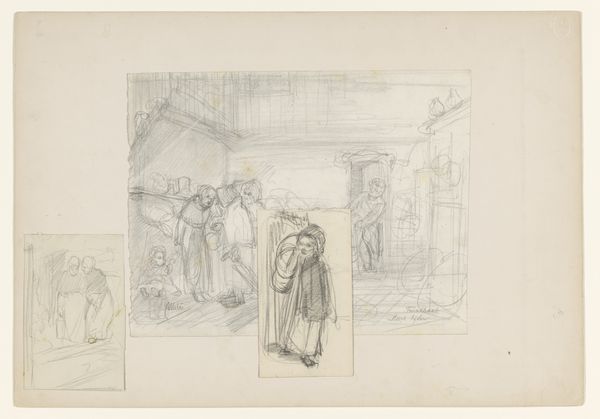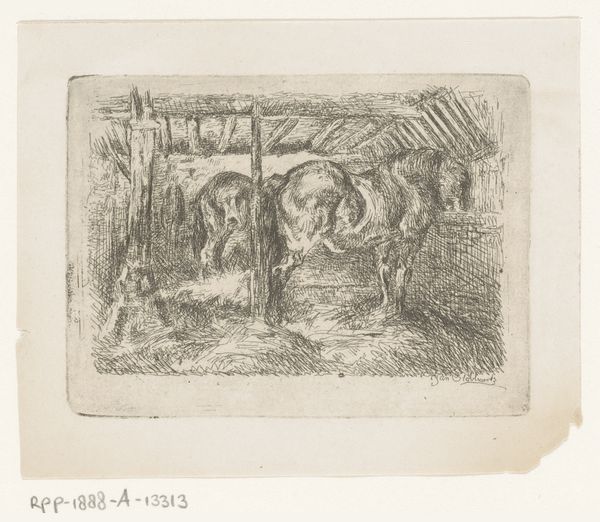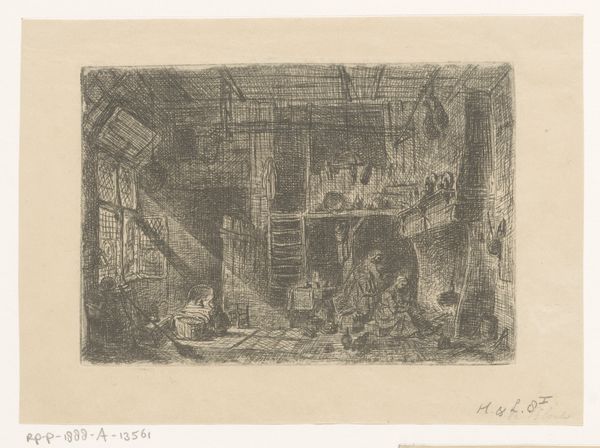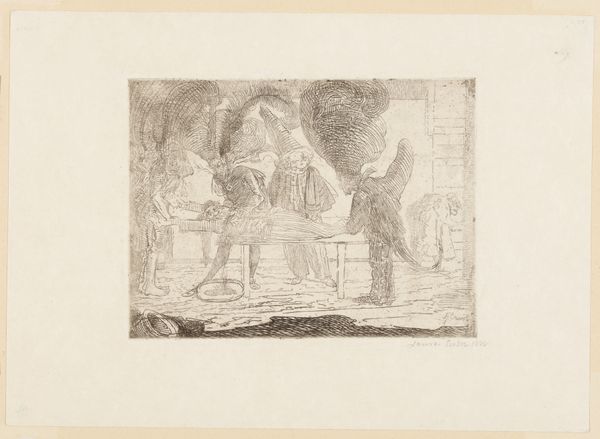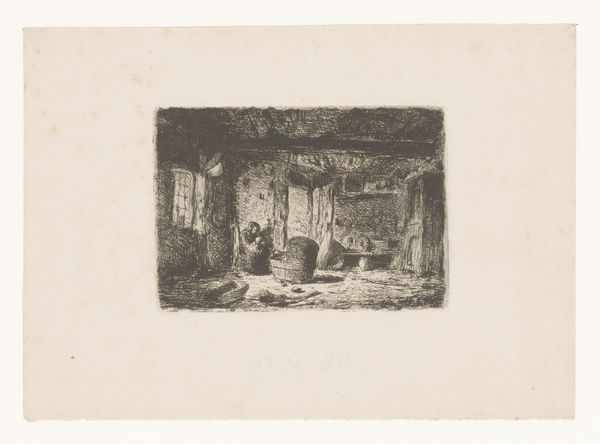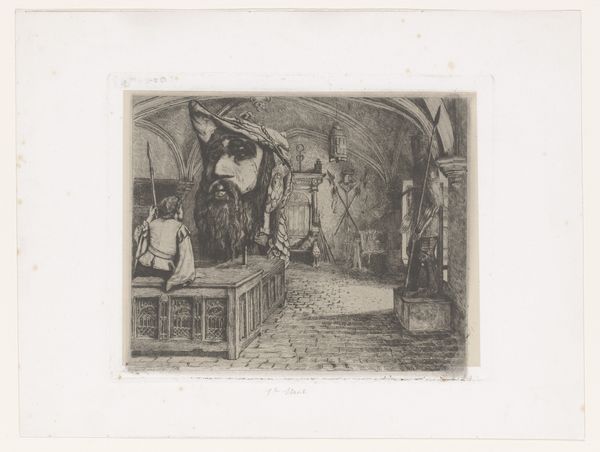
Twee mannen volgen het bevel van een derde op om een in lakens gewikkeld lijk in het kanaal te gooien 1842
0:00
0:00
#
light pencil work
#
pen sketch
#
pencil sketch
#
incomplete sketchy
#
etching
#
personal sketchbook
#
ink drawing experimentation
#
pen-ink sketch
#
sketchbook drawing
#
pencil work
Dimensions: height 107 mm, width 176 mm
Copyright: Rijks Museum: Open Domain
Curator: This compelling pen sketch, created by Gustave Buschmann in 1842, appears to depict men observing the crucifixion. Editor: Yes, it does have a stark, almost unsettling tone. The scratchy, light application of ink creates a haunting visual texture. Curator: Indeed. Buschmann was working at a time when art academies were solidifying their control, but we also see individual artistic exploration flourishing. This feels like one of those, where he's experimenting with light and shadow to intensify the scene's emotional resonance. The incomplete, sketchy quality to me evokes a raw, personal immediacy to this period. Editor: I agree. And how he uses the negative space is very striking. The relative sparseness emphasizes the shadowed areas, especially around what is most probably a cross. Also, it almost makes you look harder, lean in. It is all about dark mass set against areas with barely any detail. This elevates its power, wouldn’t you say? Curator: Certainly. And if you consider that Buschmann might have created this work within his sketchbook, we can imagine him wrestling with some grand, yet to be fulfilled commission perhaps, or possibly religious tensions. This era dealt with intense upheaval and the questioning of traditional authority, including the church's standing. Editor: True. When viewed through the lens of pure form, the cross, shrouded as it is in such heavy ink work, is definitely the dramatic highpoint. Then you see the men who are witnessing this execution: a small huddle against this backdrop. There is also someone who seems to be kneeling, imploring; together it really draws one's attention to this important historical episode. Curator: Thinking about it as a potential sketchbook work really heightens the impact. It could provide us a unique insight into the artist’s mindset at the time. It humanizes his perception to be working and forming art like that; his work can really reflect humanity's experience, right? Editor: Ultimately, both the formal artistry and contextual placement can enrich our comprehension of human life in historical narratives like this one. Curator: Yes. A fleeting pen stroke offering up lasting implications about power and faith, wouldn't you say?
Comments
No comments
Be the first to comment and join the conversation on the ultimate creative platform.
